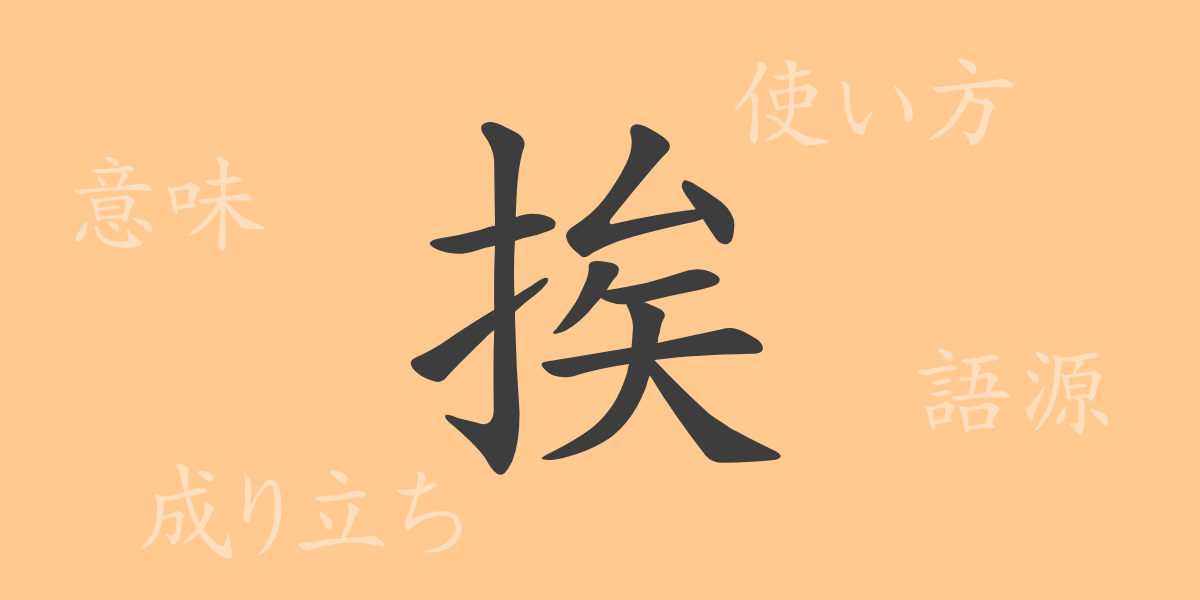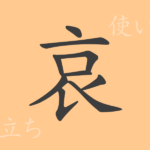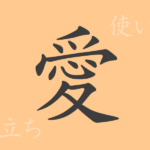“
Each Kanji used in Japan carries deep meanings ingrained in our daily lives and culture. ‘挨’ (Ai) is one such character, used in specific contexts and situations within the Japanese language. This article will delve into the origins, meaning, usage, readings, and related phrases and idioms of ‘挨’ (Ai), offering a comprehensive analysis.
Origins of 挨 (Ai)
The Kanji ‘挨’ (Ai) is relatively rare and has a unique origin compared to more common characters. It is formed from the components ‘扌’ (Te-hen, hand radical) and ‘矣’ (I, signifying a sound). This combination initially meant ‘to tap lightly with the hand,’ evolving to meanings related to ‘contact’ and ‘approach.’ Thus, ‘挨’ (Ai) has come to represent both physical touch and psychological closeness.
Meaning and Usage of 挨 (Ai)
The Kanji ‘挨’ (Ai) includes meanings such as ‘to touch,’ ‘to approach,’ and ‘to proceed slowly.’ In phrases like ‘挨拶’ (Aisatsu, greeting), it denotes ‘reducing distance between people,’ often used both physically and psychologically. Commonly, it appears in everyday language in expressions like ‘exchange greetings’ and ‘to greet.’
Readings, Stroke Count, and Radical of 挨 (Ai)
Basic information about the Kanji ‘挨’ (Ai) includes:
- Readings: On-yomi is ‘Ai’, Kun-yomi are ‘Hiraku’ and ‘Su-reru’.
- Stroke Count: 10 strokes
- Radical: ‘扌’ (Te-hen, hand radical)
Phrases and Idioms Using 挨 (Ai)
Common phrases and idioms that include ‘挨’ (Ai) are:
- 挨拶 (Aisatsu): Words or actions used to reduce psychological and physical distance between people; widely used in daily life.
- 挨拶回り (Aisatsu-mawari): Making rounds of greetings for specific purposes like New Year’s greetings or new appointments.
- 挨拶状 (Aisatsu-jou): Written greetings used in various situations such as wedding invitations or moving notices.
These phrases and idioms illustrate the use of ‘挨’ (Ai) in social communication, based on its fundamental meanings of ‘approaching’ and ‘contacting.’
Summary of 挨 (Ai)
While not frequently used, the Kanji ‘挨’ (Ai) plays a significant role in the daily and social lives of Japanese people. Through phrases like ‘挨拶’ (Aisatsu, greeting), it is often employed to reduce distances between people. This article helps deepen understanding of the meanings, usages, and cultural values behind ‘挨’ (Ai), showcasing the depth of the Japanese language. ‘挨’ (Ai) remains a cherished element of linguistic expression in Japan.
“

























